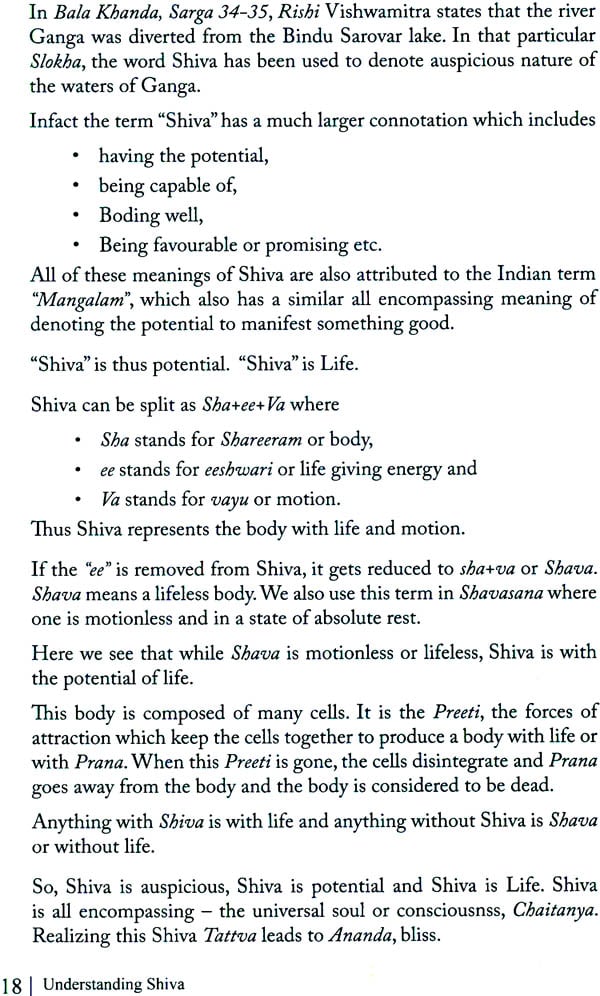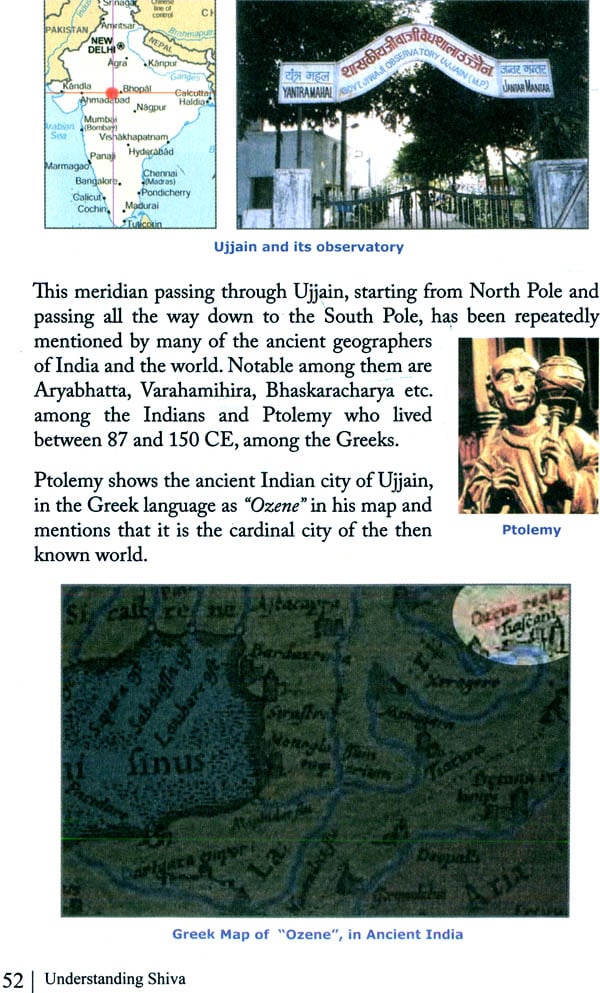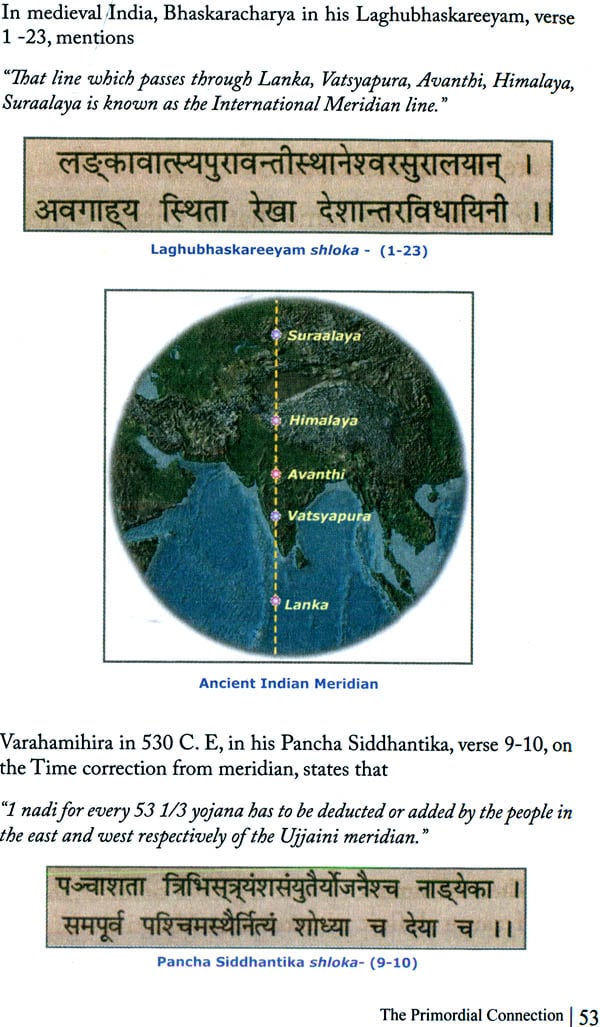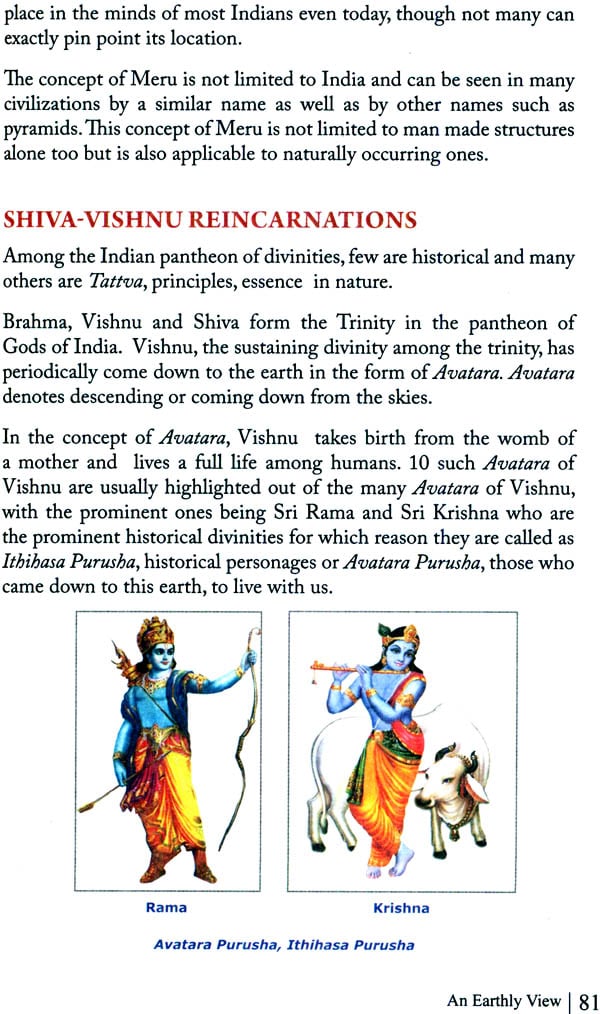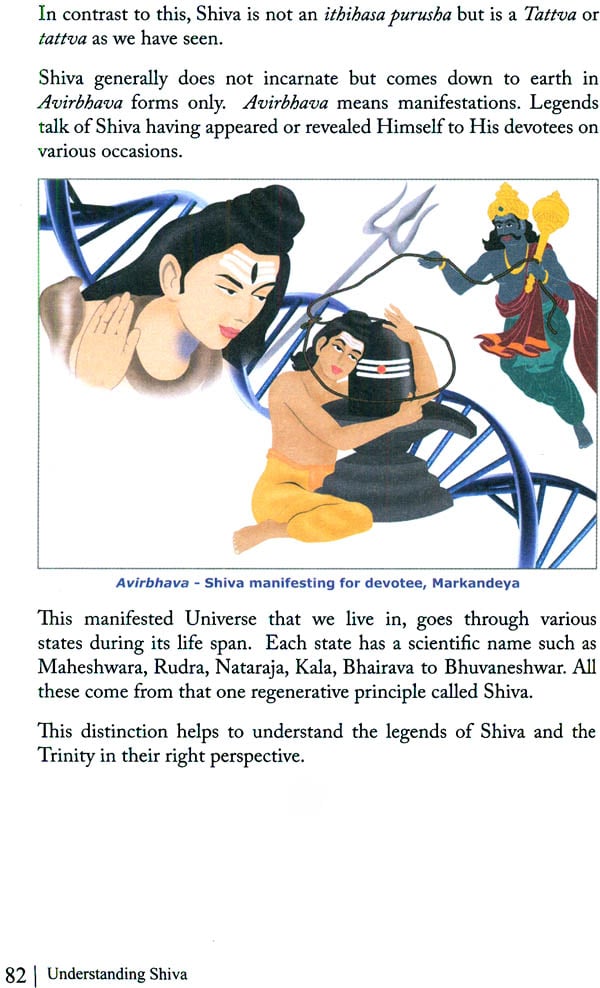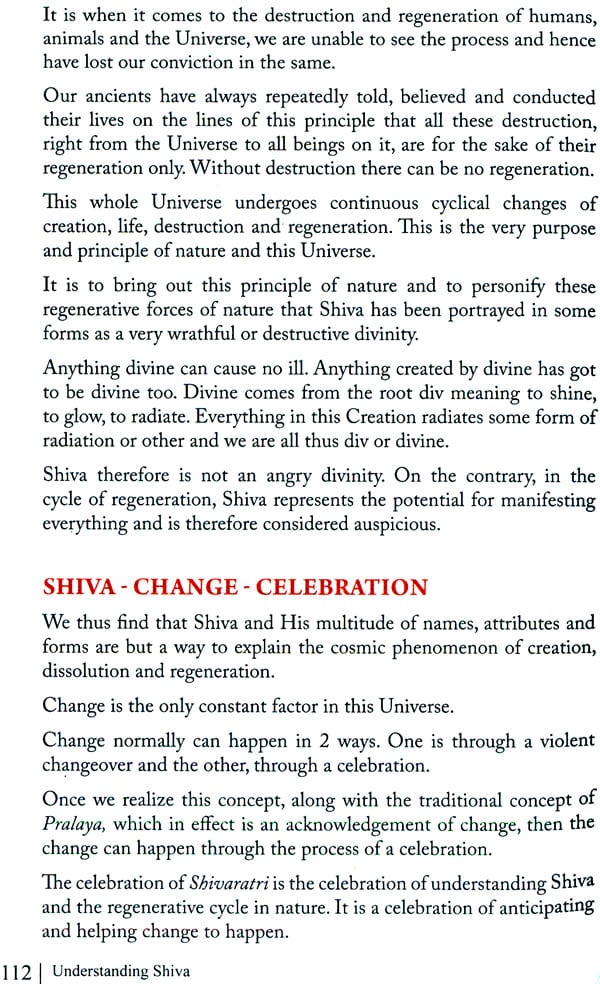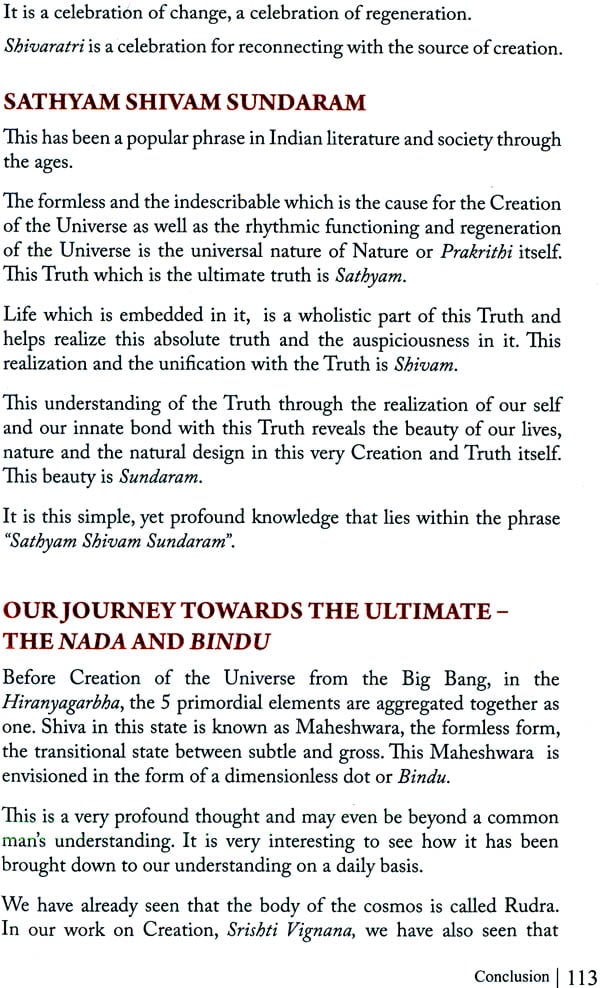
Understanding Shiva
Book Specification
| Item Code: | NAC967 |
| Author: | D.K. Hari & D.K. Hema Hari |
| Publisher: | Sri Sri Publications Trust |
| Language: | English |
| Edition: | 2016 |
| ISBN: | 9789380592220 |
| Pages: | 112 (Full Color Illustrations) |
| Cover: | Paperback |
| Other Details | 8.5 Inch X 5.5 Inch |
| Weight | 230 gm |
Book Description
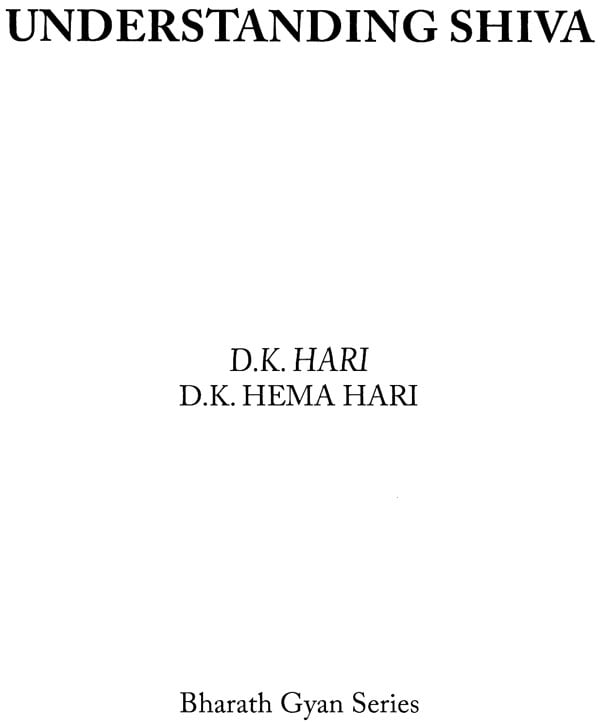
Our scientific understanding of Nature and the human system and the underlying laws have greatly increased, particularly in the last two centuries. But science does not attempt to answer why the physical laws are what they are and not something different and why these laws are stable - what makes us believe that these laws will be valid next year.
I wrote in an article in the Bhavan’s Journal in 2002 that, “as stated by Swami Vivekananda a hundred years back, there is nothing in modern science whether it is the theory of evolution or the theory of relativity-which is in conflict with Advaita Vedanta”. This is not to say that advances in modern technology have been anticipated by our Vedic Scholars, though undoubtedly we have many brilliant mathematicians, astronomers, medical practitioners and other scientists in ancient India.
The profound philosophical concepts of Advaita are made accessible to the general public by symbolism through the numerous divinities in the Hindu pantheon. I remember lecturing to a high school audience in the United States in 1965, when I was asked by one of the bright tents whether I believed in all the various deities in the Indian temples.
I told her that I would like her to answer my question first. I drew a circle on the board with a small dot marked ‘electron’ at one point on the circle and a thick dot marked ‘proton’ at the centre and asked her what it was. She said correctly; the hydrogen atom I said that a hydrogen atom is one Angstrom in diameter while I had drawn a circle three feet in diameter The teacher, who then entered the debate, said that obviously you cannot draw a circle on the board an Angstrom in diameter and that is why such a representative drawing is necessary to conceptualise the hydrogen atom. I said the same is true for Hindu philosophy. If you can conceptualise Advaita in the abstract, you need not go to temples. ‘The symbolism in the form of divinities is an intermediate support system.
Among these I think that the symbolism of Shiva is the most sublime. This has been brought out beautifully in this scholarly book: “Understanding Shiva”. Woven into the celebration of the festival “Shivaratri”, while emphasizing the formless nature of Shiva, are the concepts of the regeneration of life, the importance of energy and the nature of consciousness. The contents have been put together with great care and will be a reference source for generations to come. I learnt a great deal from this book.
Every year, we celebrate Shivaratri with fervour and gaiety It is a night flail of piety. It is a night full of singing devotional songs and chanting the name of Shiva. A night fall of awakening, celebrating and understanding the concept of Shiva Tattva. It is one of the holiest of festivals celebrated by Indians all over.
Why do we celebrate Shivaratri?
Who is this Shiva? Why do we celebrate it as the night of Shiva?
Can we understand the concept of Shiva Tattva?
In this Bharath Gyan series, we look at Shiva Tattva and try to understand Shiva not just as a religious symbol but more as a Universal principle, which s what it really stands for in all the ancient texts of India.
We have been singularly fortunate to have been born in this land of ancient wisdom and seers. We owe a lot to our parents who have brought us into this world and provided for us the right education, upbringing and guidance. The values and tradition of this ancient culture and civilization inculcated in us by our family and teachers is what has formed the basis for our work at Bharath Gyan. We owe a lot to our family and friends for their continued support and encouragement in our endeavour.
Having embarked on our quest, many scholars, thinkers and students of the knowledge of India have come forward and helped us in this collation. Some have helped by offering data and some through their questions that made us think and look for the data.
Many traditional scholars have patiently tolerated our inquisitiveness and have laboriously searched and retrieved from the ancient texts, the data we had requested of them and explained the same to us in simple layman terms. Without their mastery over old and new, their knowledge, their mind-set and support, this bridge from the ancient to the present day, would never have been built.
When faced with the task of dissemination, many friends, experts, patrons and guides have come forward to help review our works and take it to stages of production and distribution. We owe a lot to their support without which, this compilation could not have seen the light of the day.
More specifically, we would like to thank His Holiness Sri Sri Ravishankar, for the faith reposed in us and our work and for offering us a platform, to share the knowledgebase we have collated, with the community at large.
We would be failing in our character, if we do not acknowledge more importantly, the unseen forces which have connected us up with these right sources of information and noble people just in time, just as we were looking for the information and help.
In particular, we thank Prof. K. Srinivasan, Head of Department, Samskrit, Ramakrishna Mission Vivekananda College, Chennai, for helping us understand Shiva better.
The list is very long and words fail us to thank all sufficiently Hence we take refuge in the all encompassing words of the 18th century Indian Poet Saint Thyagaraja -
Entharo Mahanu Bhavulu Anthariki Vanadanamulu
There are many noble persons (behind this work) and we salute them all.
| About Bharath Gyan | v |
| Benedictory Note | vii |
| Foreword | ix |
| Preface | xi |
| Acknowledgements | xiii |
| Shivaratri - A Gateway to Understanding Shiva | 1 |
| Shivaratri - The Experience | 3 |
| Meaning of the term Shiva | 3 |
| Understanding Night or Ratri | 5 |
| The Natural Rhythm | 5 |
| History of Shivaratri | 6 |
| Appreciating Shivaratri | 7 |
| Shiva Tattva | 9 |
| The nature of Shiva | 9 |
| Getting to Know Shiva | 14 |
| The Primordial Connection | 17 |
| Shiva Lingam | 17 |
| Shiva and History | 26 |
| Omkaranath | 27 |
| Kala | 29 |
| Bhairava | 37 |
| The Cosmic Perception | 39 |
| An understanding of Rudra | 39 |
| The Significance of Rudra | 39 |
| Relating to Rudra | 41 |
| Microcosm and Macrocosm | 42 |
| Nataraja | 43 |
| Scientific Reasoning or an Accidental Stumbling | 47 |
| An Earthly View | 49 |
| Shankara - A Human Form | 49 |
| Purana- Indian Legends | 50 |
| Story of Daksha and his 60 Daughters | 50 |
| Rudra and their 11 wives | 52 |
| Sati and Shiva | 54 |
| The Profound Allegory and Significant Clues | 55 |
| An Indian Way Of Expressing | 56 |
| Pashupathi | 58 |
| Kailashnath - Lord of the Mountains | 60 |
| Shiva-Vishnu Reincarnations | 62 |
| Symbolism in Shiva | 65 |
| Trishul - The 3 Dimensions | 65 |
| Damaru | 70 |
| Tryambaka, Trinetra or 3 Eyed | 71 |
| The Forehead Mark - Vibhuti | 74 |
| Nandi-the bull | 76 |
| Jatadhara - Matted hair | 78 |
| Chandrasekhara - Moon on His Head | 78 |
| Gangadhara - Bearing Ganga on His head | 80 |
| Other Popular Forms of Worshipping Shiva | 81 |
| Ardha Nari | 81 |
| Dakshinamurthy | 84 |
| The 12 Jyothir Lingam | 85 |
| Shankara Narayana or Harihara | 86 |
| Pancha Bhutha | 86 |
| Maheshwara | 88 |
| Sada Shiva | 88 |
| Conclusion | 89 |
| Shiva, a Regenerative Principle | 89 |
| Shiva - Change - Celebration | 90 |
| Sathyam Shivam Sundaram | 91 |
| Our Journey Towards the Ultimate - The Nada and Bindu | 91 |
| Seeing Shiva, the Potential in Everything | 92 |
| Epilogue | 97 |

